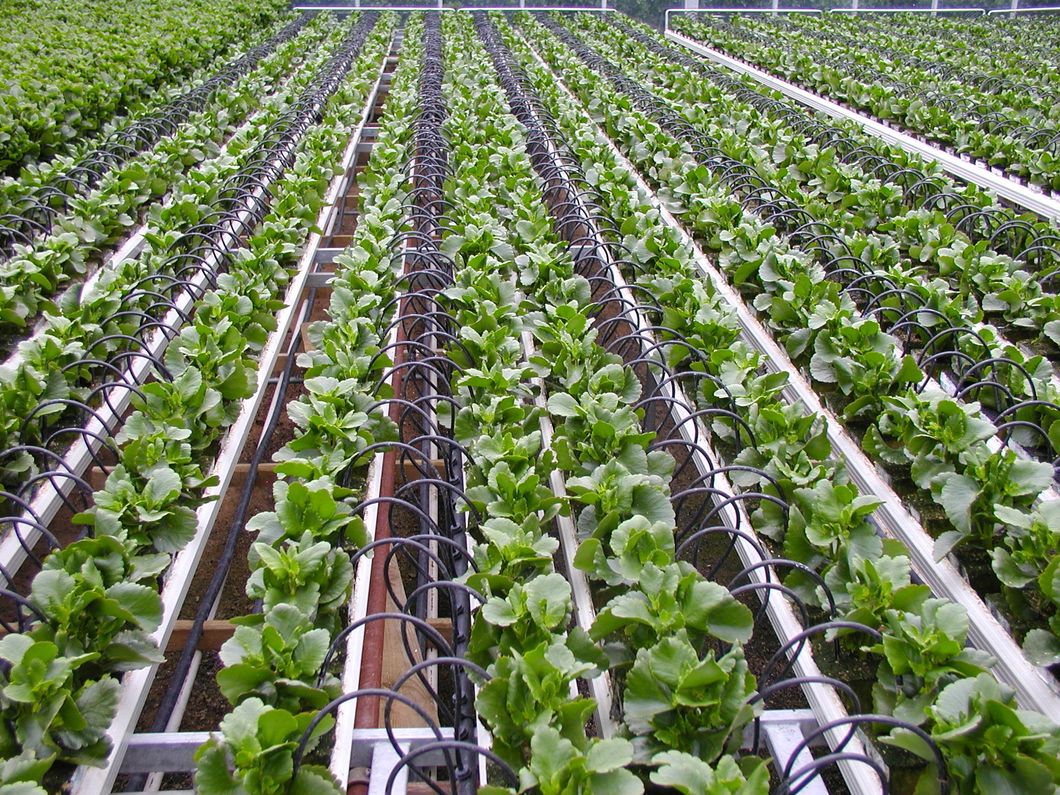Benefits of Using a Garden Irrigation System
Modern times call for modern irrigation.
There is no denying the beauty of glistening water drops scattered over vibrant plants. The sun reflecting off water collected on leaves and vegetables seems diamond-like, and nothing says fresh like a hydrated garden. Although a wet garden seems like a happy garden, plants don't need or want to be continuously wet from top to bottom. They absorb nutrients and water through their root systems underground, meaning water is more or less wasted when it sits above ground. In fact, stagnant water on a leaf or over-watering a plant can be extremely detrimental to its health.
Watering your garden isn't like watering your yard. Most grasses used throughout the US are extremely hardy, capable of resisting disease and rot caused by water. Garden plants and vegetables, however, need a gentler irrigation strategy. Flowers and vegetables are sensitive to watering, and thrive in a moist soil. While stems and leaves can manage being wet, it is inadvisable to continuously spray them with water.
There are multiple factors to consider in garden watering, and successful gardeners will take advantage of a proper irrigation system.
What are the Dangers of Watering by Hand and Sprinkler
Traditionally, the concept behind watering has been to get the plant, field, or garden wet. Whether it was through a hose, can, or sprinkler system, plants just needed a vague amount of water thrown at them like rain. Although the environment seems like an appropriate role model, a gardener's care and concern must go deeper than the Mother Nature's comprehensive sprinkler system.
As mentioned earlier, gardens usually contain plants and vegetables more susceptible to external factors. Naturally plants can get wet, but growing a healthy garden means minimizing potential threats. Over-watering or keeping stems and leaves consistently wet leads to mold, disease, and rot. Damp areas under the leaves will grow mold, and the water on top of leaves magnifies the sun's rays which burns the plant. These symptoms may not appear immediately, but preventative care is a gardener's best strategy. Instead of unequally watering and putting gardens at risk of decay, irrigation systems can ensure the job is consistently well-done.
Garden Irrigation Benefits
Soaker hoses and drip irrigation systems are optimum in gardens. They provide steady streams of water for set amounts of time right to the plant's base and soil, guaranteeing the consistency a garden craves. These systems are also much less costly than installing a sprinkler system. In lieu of trying to eyeball the proper amount of watering a garden needs daily, serious gardeners make the low-cost investment in irrigation systems.
On top of reducing health risks to plants, irrigation systems conserve water and create organizational patterns. Due to their design which introduces water directly to where it's needed, soaker hoses and drip irrigation systems vastly cut down on the amount of water needed. In today's "green" mindset, conserving water is a major benefit to both the garden and the world. Depending on what the purpose is, gardeners can find multiple irrigation system designs. Some are flexible, and some are built for square foot gardening.
The square foot gardening irrigation systems are especially beneficial because they separate the garden into equal organizational squares. Gardeners can use these to space their plants appropriately, achieving even greater watering technique. Plants that don't have enough space will choke one another in their search for water and nutrients. To thrive, each plant and vegetable needs its own personal space.
In addition to water conservation, organization, and threat reduction, irrigation systems provide an intangible benefit as well – time. Instead of spending more time unequally watering their garden, gardeners perform two simple steps that ensure near-perfect watering: 1) check the soil moisture (1"- 1.5" inches of moisture depth), and 2) if the soil is dry, set the timer for a few minutes. This two-step process takes minutes to accomplish, allowing gardeners to spend less time worrying and more time on other ventures.































































































